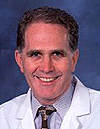Thursday, January 28th
|

|
What Kind of Assistive
Technology Do You Need if You Break your Neck?
Graham Creasey, MD
VA Palo Alto Health Care System |
Abstract: Breaking your neck can
affect nearly every part of your life. Physically, you may be paralyzed from
the neck down, with no feeling in the body, unable to control your bladder or
bowel or sexual function. Obviously, this affects you emotionally and socially
- your education, work, house, travel, and relationships. What can assistive
technology do to change this?
The industrial revolution gave us new tools,
special beds, mattresses, wheelchairs and cushions, catheters, implants, and
many other gadgets. The microelectronic industry has revolutionized
communication and control of equipment in the environment; if you can control a
computer, you can control many other things.
What about controlling paralyzed
muscles?
What about curing paralysis?
Biosketch: Graham Creasey is the
Paralyzed Veterans of America Professor of Spinal Cord Injury Medicine at
Stanford University and the Chief of Spinal Cord Injury Service at the VA Palo
Alto Health Care System. His research interests include the restoration of
function after spinal cord injury, using information technology, and
biotechnology.
- Contact information:
- VA Palo Alto Health Care
System
- Spinal Cord Injury Service
- 3801 Miranda Ave.
- Room C115, Building 7
- Palo Alto, CA 94304
- gcreasey -at- stanford.edu
- Lecture Material:
- Directions to the
class - 123 Kb pdf file
- Slides - Kb pdf file
- Audio -
1:29:31 - 20.4 Mb mp3 file
- Links:
- Stanford School of
Medicine Academic Profile
- New program for
spinal injuries
|
